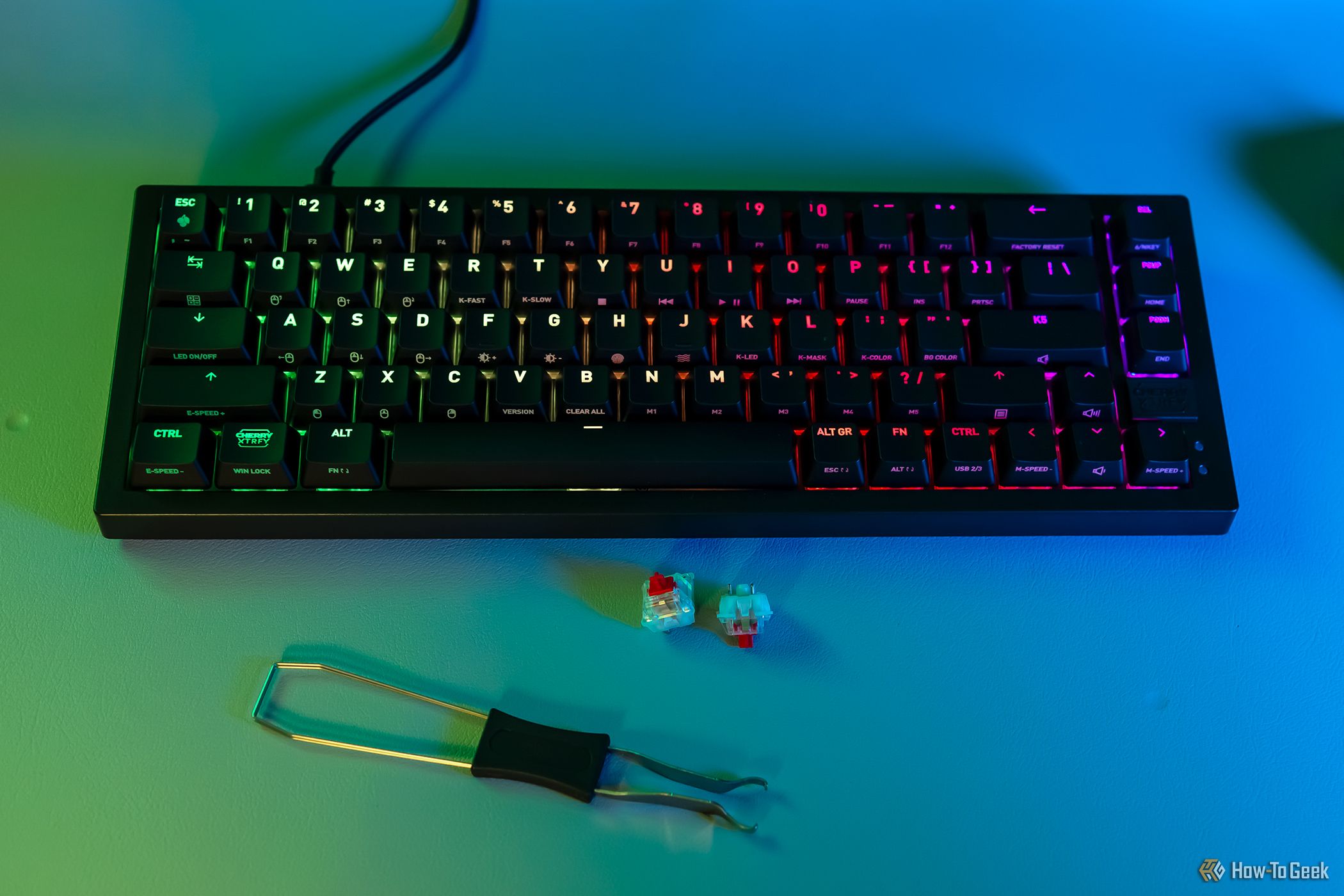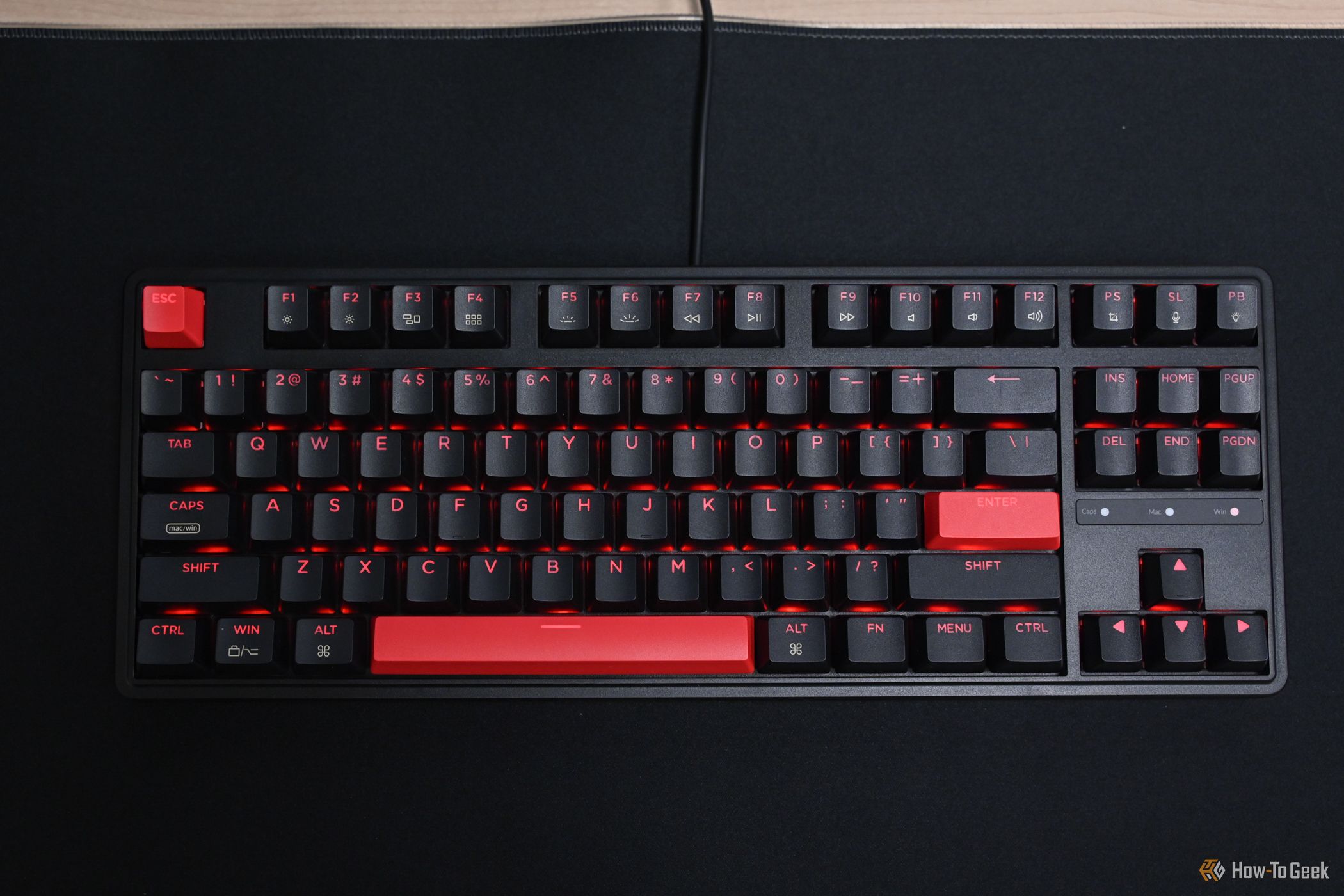Summary
- Budget mechanical keyboards have vastly improved in quality thanks to numerous innovations.
- Manufacturers now offer premium features like hot-swappable boards, lubed switches, and RGB lighting at lower prices.
- There is a wide variety of excellent mechanical keyboards available for under $50.
Mechanical keyboards have come a long way in the past ten years. Today’s budget options blow the old premium stuff out of the water. Regardless of whether you’re a typist, gamer, or both, there’s a healthy variety of budget-friendly keyboards and customization options that you shouldn’t miss out on.
Budget Mechanical Keyboards Used to Suck
If your only point of reference for cheap mechanical keyboards is from unknown brands six or seven years ago, I wouldn’t blame you for thinking that they still suck. I tried a few of them myself and wasn’t impressed. They were plagued by poor build quality, cheap-feeling ABS keycaps, hollow-sounding cases, inconsistent switches, single-color backlighting (if any), and zero software support. These cheap keyboards were barely a step above membrane models; in fact, you could argue that a high-quality membrane was even better.
If you wanted a good budget keyboard, your only good choice was a model that had Cherry MX switches. They’re the original modern MX switch and were largely considered the only good option, with Razer’s first-generation Kaihua switches (introduced in 2014) in the BlackWidow offering a decent alternative. However, the issue is that these switches were relatively expensive, so even budget keyboards without RGB would still cost around $80 (like the old Cooler Master Quick Fire Rapid), which is hardly a budget keyboard if you ask me.
Double-shot PBT keycaps were practically unheard of. My old Corsair K70 wasn’t even a cheap keyboard, yet it came with horrible ABS keycaps. The keycap stems were so fragile that they’d crumble if you pulled the keycap off the switch too forcefully.
Premium Features Are Now Standard
When keyboard enthusiasts began experimenting with mods and expressed their preferences, manufacturers took note and started incorporating their ideas into their keyboards.
That’s how we got budget keyboards with hot-swappable flex-cut PCBs, pre-lubed switches and stabilizers with no spring ping or rattle, better-quality cases and backplates, gasket-mount designs, PBT keycaps, RGB backlighting, detachable USB-C cables, and multiple layers of foam and other sound damping materials. Some budget models even have gimmicks like metal accent keycaps and screens that can play GIFs.
All this innovation led to more reasonable prices and better build quality from mainstream brands, too. For instance, the modern Corsair K70 PRO, which is currently on sale for $99.99, is miles ahead of my old model in every aspect.
There’s Excellent Variety on the Market
There’s a decent mechanical keyboard for you on the market, regardless of your budget or preference. However, it’s worth considering spending at least around $40 to $50, as that’s the baseline price where you’ll find many great budget options that provide excellent value. I tested this MageGee 60%, which retails for around $30. While it’s okay for a cheap keyboard, you can get so much more if you just spend a few dollars more.
For instance, the Keychron C2 is a non-hot-swappable full-size keyboard, but it doesn’t matter because you’re getting decent Gateron switches. If you want a hot-swappable board with RGB, you can get the Redragon K668. There’s also the gasket-mounted Keychron C3 Pro which has options with or without RGB and hot-swap. If you want a mainstream brand instead, the HyperX Alloy Origins Core is currently on sale for just $43.99, a steal at that price.
Since I prefer having multiple keyboards and don’t want to break the bank, I got the Ajazz AK820 Pro and non-pro variant for myself. The Pro has nearly all the bells and whistles you can think of; while the non-pro lacks wireless connectivity, a screen, and RGB backlighting, it still offers the same excellent typing experience. Just note that Epomaker (and other associated keyboard brands) has questionable customer support, so it’s a good idea to buy through Amazon to take advantage of their buyer protection policies.
If you want a premium keyboard with a machined aluminum case, you can get one at a relatively low price point compared to just a few years ago. A popular model is the Womier SK75, which supports VIA. For a DIY keyboard with a knob, there’s the barebones Epomaker x Leobog Hi75. Another excellent but slightly more expensive and hard-to-find option is the WOBKEY Rainy 75.
These are just a few budget keyboards that I’m familiar with. The point is that you can find a wide variety of excellent keyboards for well under $100 and often even under $50. Feel free to do your own research, read reviews, and watch a few sound tests before making a decision. I’m proud to say that we’ve finally mastered the art of building good keyboards.







